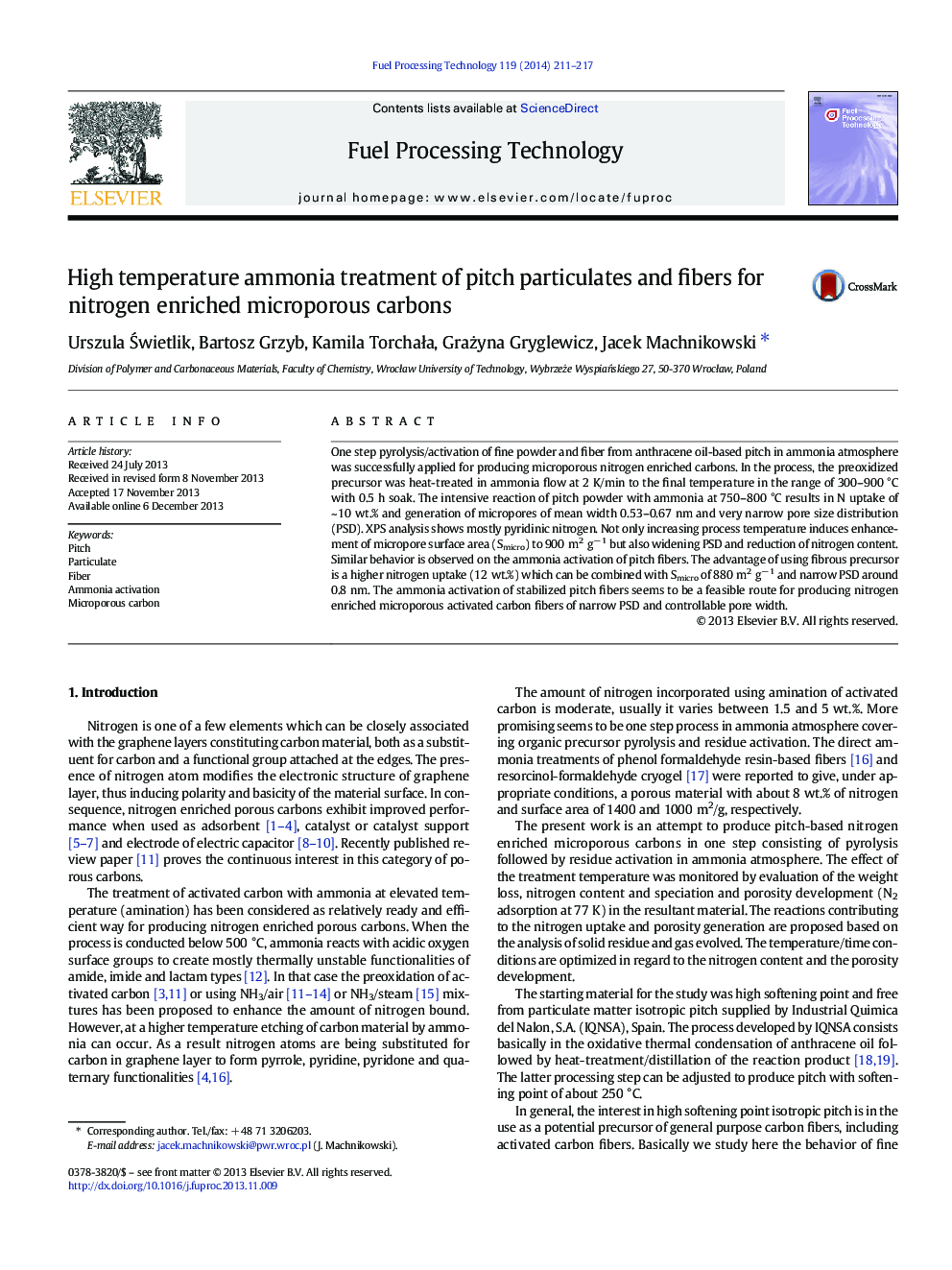| Article ID | Journal | Published Year | Pages | File Type |
|---|---|---|---|---|
| 209898 | Fuel Processing Technology | 2014 | 7 Pages |
•One step pyrolysis/activation of oxidized pitch particulates and fibers•Great nitrogen uptake, up to 10–12 wt.% at 750–800 °C•Limited microporosity development but narrow PSD•Pyridinic nitrogen predominates in the structure.•A feasible route to pitch-based N-active carbon fibers
One step pyrolysis/activation of fine powder and fiber from anthracene oil-based pitch in ammonia atmosphere was successfully applied for producing microporous nitrogen enriched carbons. In the process, the preoxidized precursor was heat-treated in ammonia flow at 2 K/min to the final temperature in the range of 300–900 °C with 0.5 h soak. The intensive reaction of pitch powder with ammonia at 750–800 °C results in N uptake of ~ 10 wt.% and generation of micropores of mean width 0.53–0.67 nm and very narrow pore size distribution (PSD). XPS analysis shows mostly pyridinic nitrogen. Not only increasing process temperature induces enhancement of micropore surface area (Smicro) to 900 m2 g− 1 but also widening PSD and reduction of nitrogen content. Similar behavior is observed on the ammonia activation of pitch fibers. The advantage of using fibrous precursor is a higher nitrogen uptake (12 wt.%) which can be combined with Smicro of 880 m2 g− 1 and narrow PSD around 0.8 nm. The ammonia activation of stabilized pitch fibers seems to be a feasible route for producing nitrogen enriched microporous activated carbon fibers of narrow PSD and controllable pore width.
Graphical abstractFigure optionsDownload full-size imageDownload as PowerPoint slide
